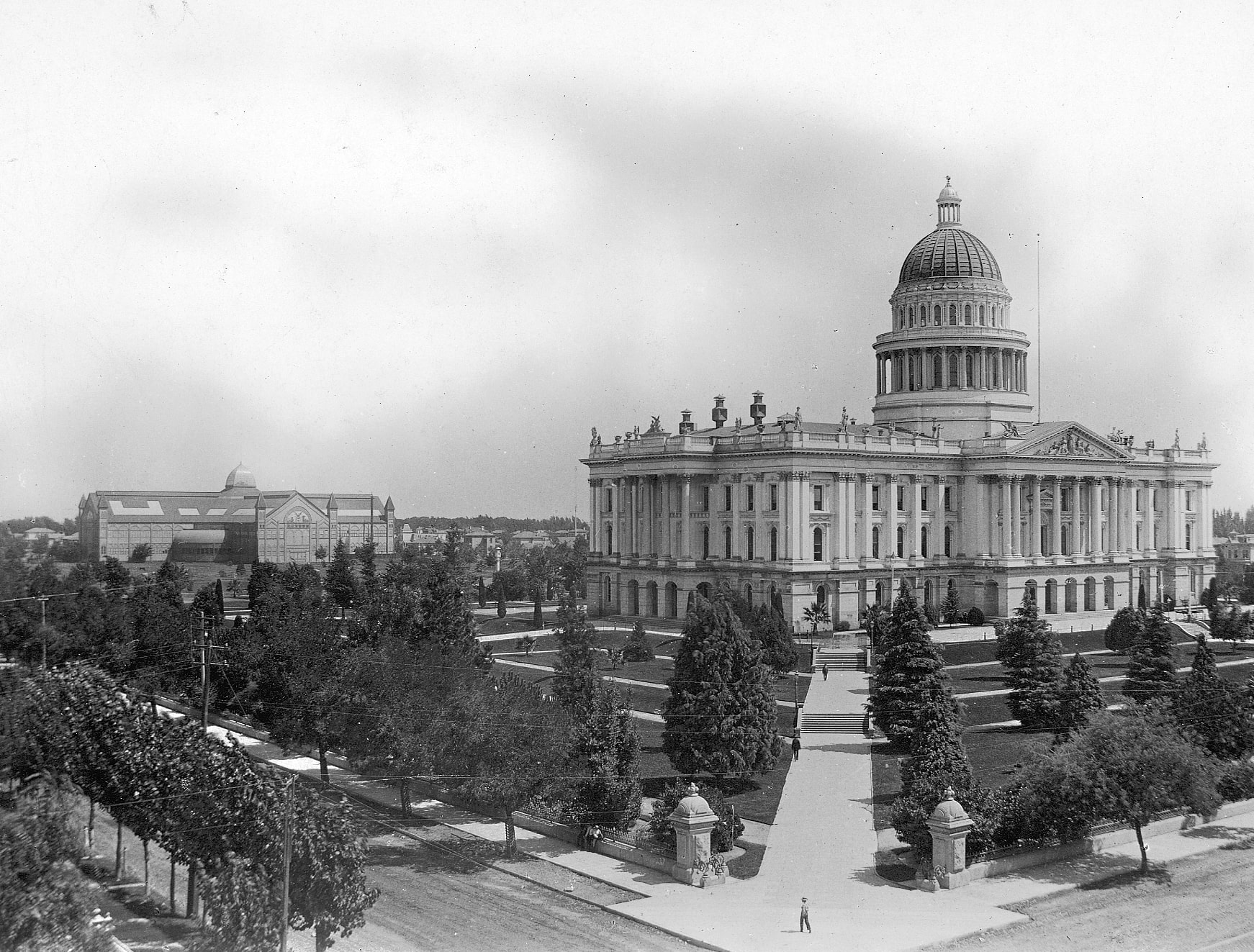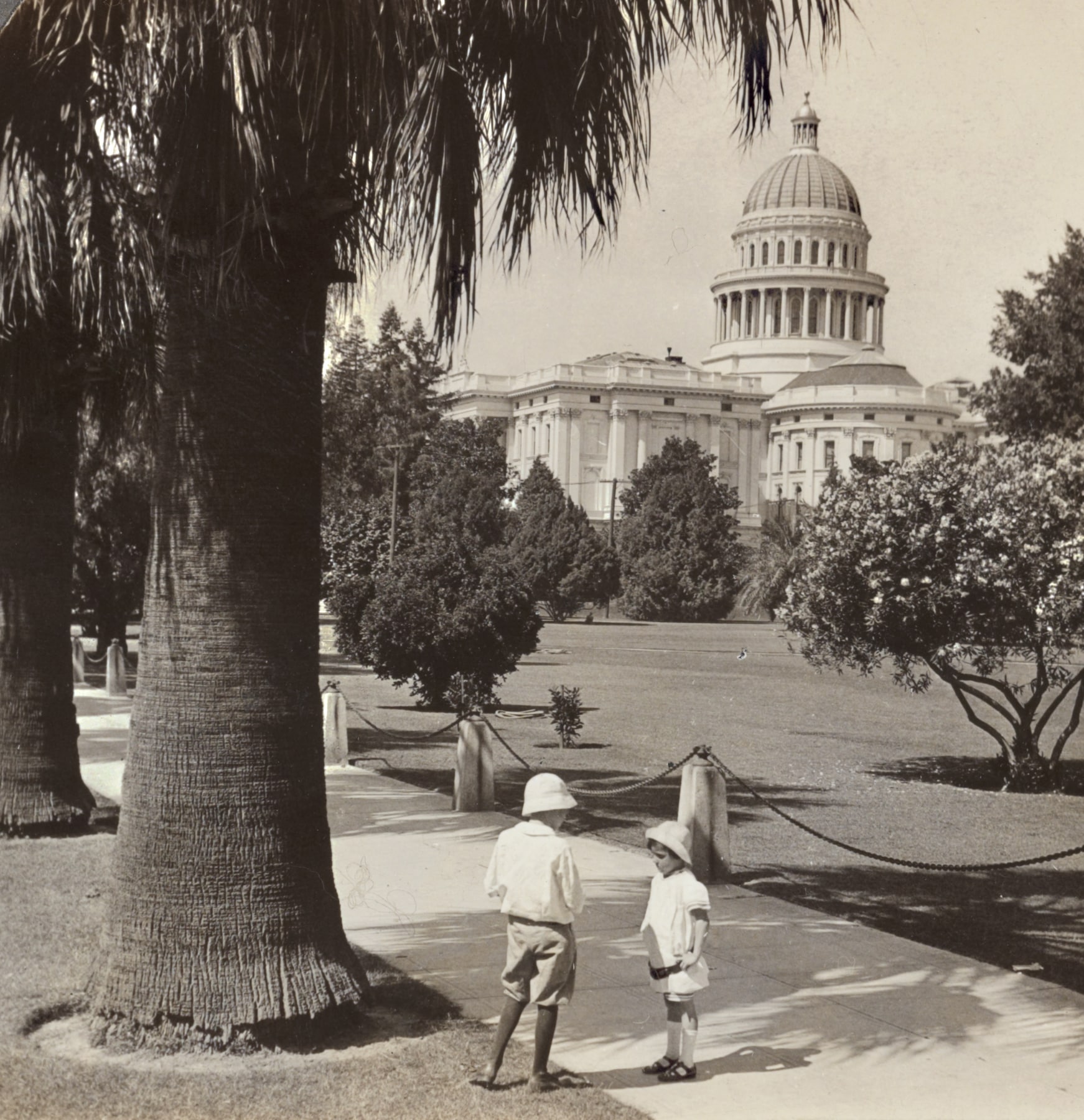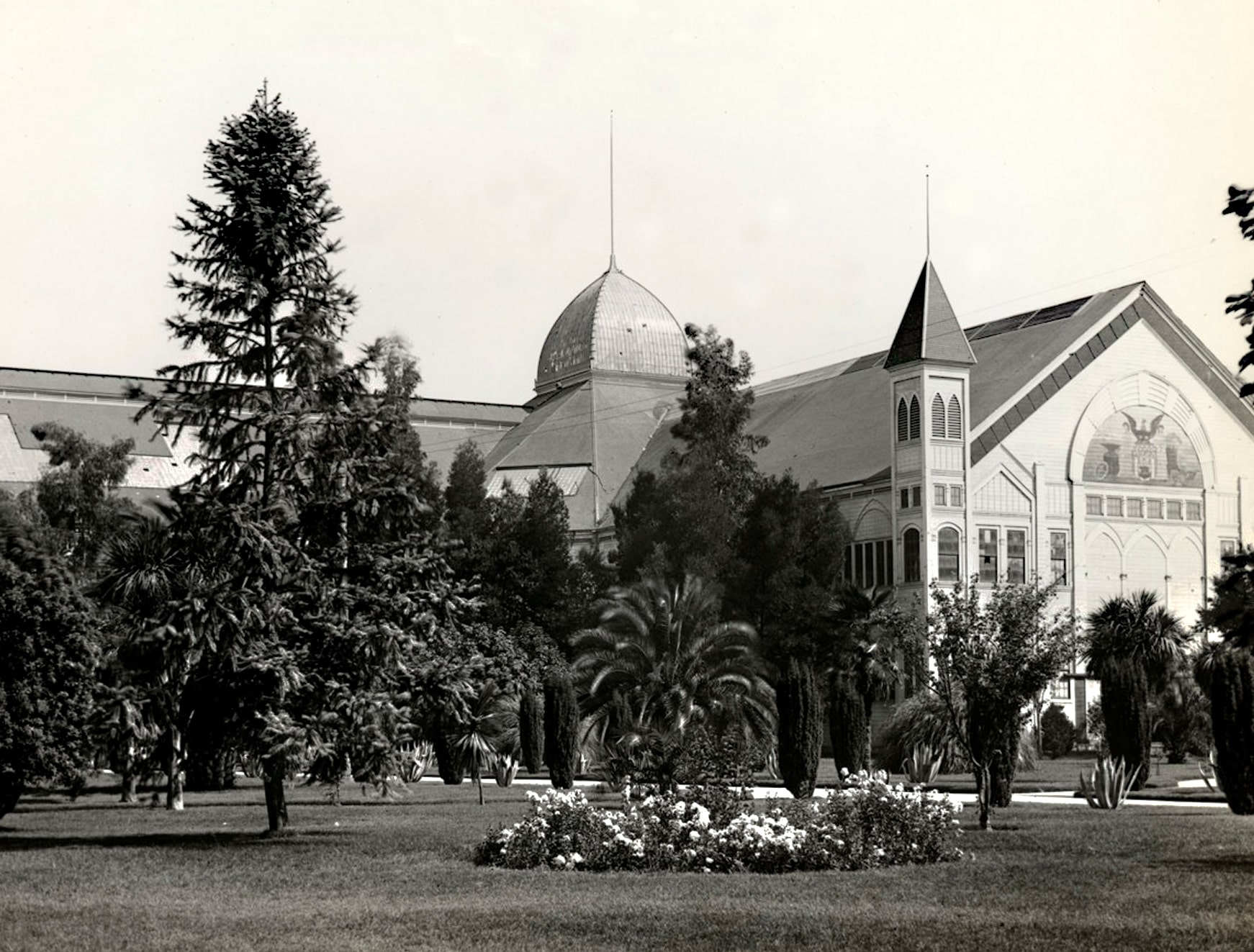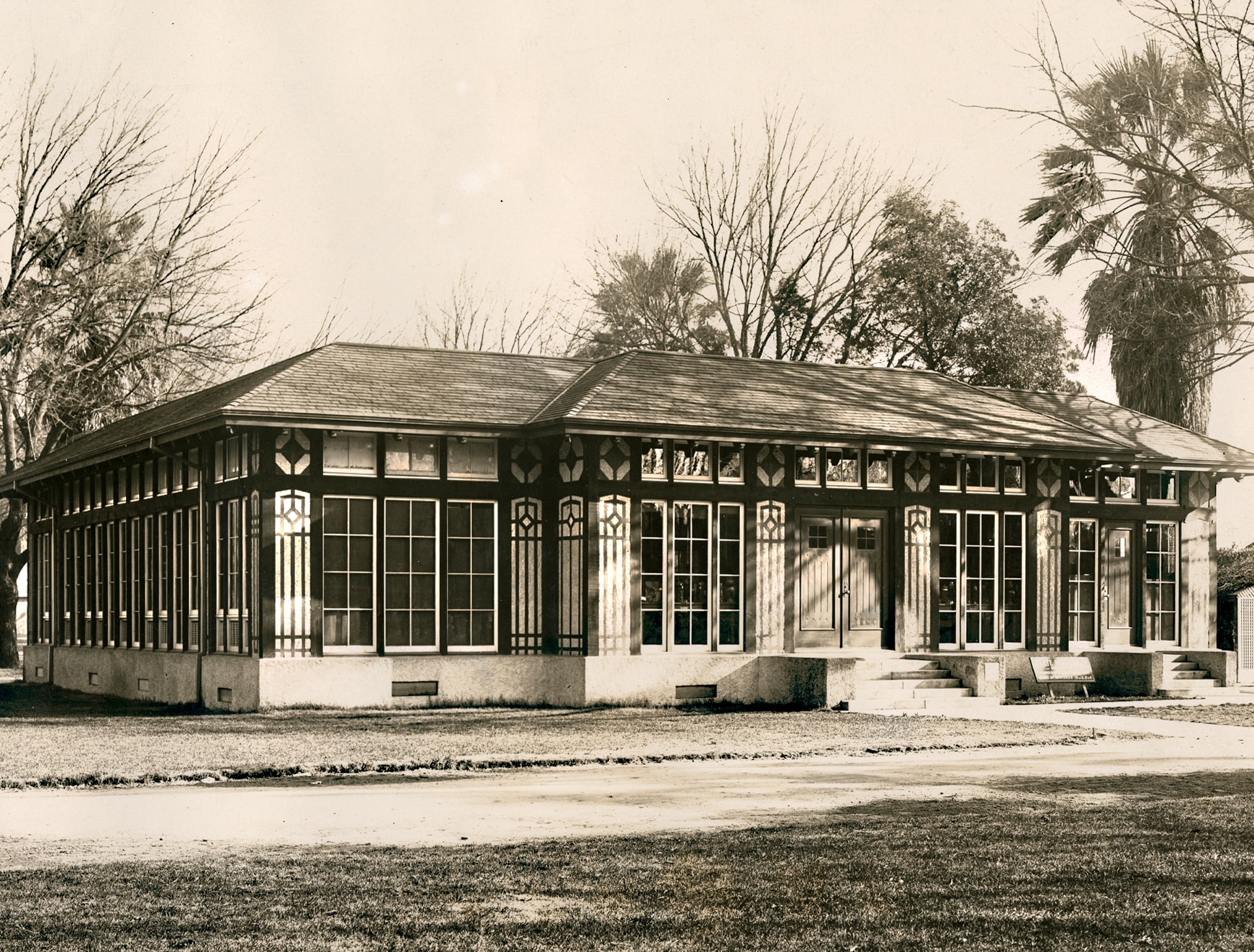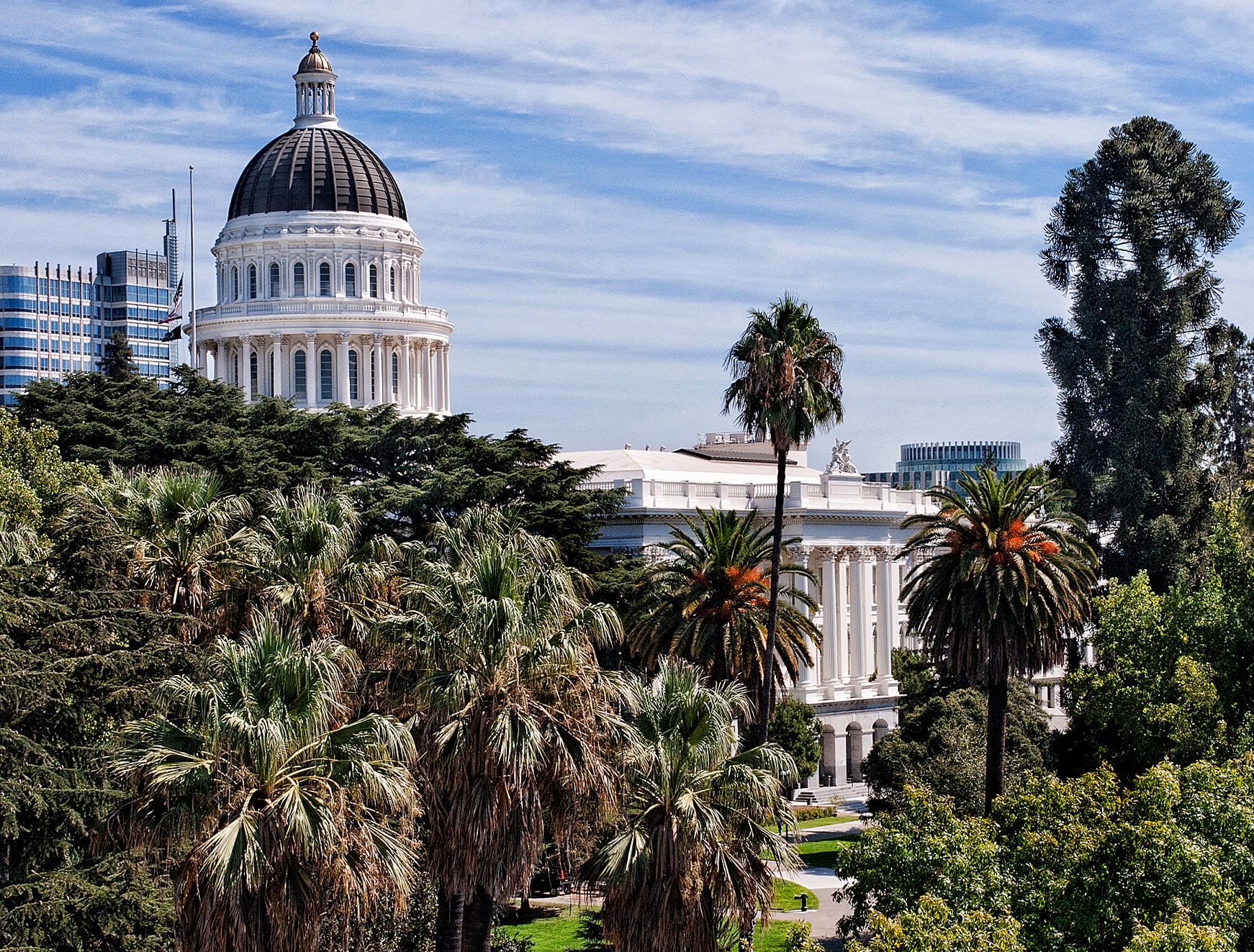The History of Capitol Park
Often considered one of the most beautiful State Capitol grounds in the nation, Capitol Park is a stunning natural escape located in the heart of Sacramento’s bustling urban landscape. The park covers forty acres, spans twelve city blocks, and contains species of plant life from nearly every part of the globe.
Capitol Park began life in 1860 as the four-block area bounded by L, N, 10th, and 12th Streets. Beautification of the park commenced in 1869. The land was later graded and enriched with silt from the bed of the Sacramento River. Today, Capitol Park supports nearly 2,000 trees, flowering shrubs, and bushes representing over two hundred native and exotic varieties.
At the main entrance of the State Capitol building lies the oldest section of Capitol Park. Here, outstretched before the west steps, you will find trees pre-dating the completion of the Capitol. Among these are Deodar cedars with gracefully weeping branches and Italian Stone pines with grand, umbrella-shaped canopies that were originally planted in January 1872.
Many of the trees in Capitol Park have withstood the test of time, with several varieties having lived far beyond their normal life spans. Sacramento’s warm Mediterranean climate and fertile, sediment-rich soil have contributed to the continued prosperity of these stately trees.
In the late 19th century, exotic specimens were sourced from as far abroad as possible, traveling by boat in Wardian cases (an early type of terrarium) under the watchful eye of a tree keeper. Among these specimens stand ancient Sago Palms and Gingko Biloba – living fossils unchanged for millions of years.
Of the 208 unique tree species in Capitol Park, one native variety makes a particularly huge statement. The Coast Redwood, virtually endemic to California’s Pacific coast, is one of the world’s fastest growing conifers (cone-bearing trees) and the tallest of all living things. These trees can reach soaring heights, measuring over 300 feet tall and up to 30 feet wide. Coast Redwoods, in addition to being the most numerous trees in Capitol Park, also serve as the official state tree of California – a distinction it shares with the Giant Sequoia.
Capitol Park was first conceived as a traditional Victorian garden. Long lanes leading between plots of vivid annuals served as the framework of the park, seating symmetrical plantings of enormous flower beds and matching greenery under trees for added visual interest. Victorian gardens are best defined by their labor-intensive designs and strict, formal shapes. This style is further demonstrated by the large, manicured Irish Yew shrubs that line the principal pathway east of the Capitol building.
Added in 1870, the block bordered by L Street, Governor Hiram W. Johnson Memorial Parkway, 14th, and 15th Streets provided a location for a governor’s mansion. Although the mansion was completed on the northeast corner of the park as planned, it was never furnished or utilized by any governor as an official residence. Instead, the governor’s mansion was converted into the State Armory and State Printing Office, with further additions and modifications made to the building until its demolition in the early 1920s.
The blocks east of the Capitol to 15th Street became part of Capitol Park in 1872. The final two blocks, bordered by L, N, 9th, and 10th Streets, were secured in 1917 for the Capitol Extension buildings.
In 1884, the state constructed the Agricultural Pavilion at 15th and N Street. The Agricultural Pavilion consisted of a central building with two wings on either side, each measuring one hundred by four hundred feet. The pavilion provided space for social events, hosted the State Fair until 1905, and housed victims of the 1906 San Francisco earthquake. In 1908, the state replaced the pavilion with native California plant life including Giant Sequoias, oaks, pines, and a cactus garden.
Located at the corner of 13th and L Streets lies one of the few remaining outbuildings in Capitol Park. Constructed in 1908 to serve as the State Insectary Building, it was one of only two Insectariums in the world. The Insectary Building was founded by the State Board of Horticulture and designed by George Clinton Sellon – California’s first State Architect. The San Francisco-born architect served in this position from 1907 to 1909 and designed several historic state institutions.
The State Insectary Building played an important role in the advancement of California agriculture through its beneficial insect collection, breeding, and distribution programs. These services were provided, free of charge, to farmers and growers across the state to help combat harmful pests. This practice, historically known as parasitology, was driven by the work of Ellwood Cooper who served as the first State Board of Horticulture Commissioner of California from 1885 to 1907.
In 1923, breeding and storage activities at the Insectary were moved to the Citrus Experiment Station and Graduate School of the Subtropical Agriculture of the University of California at Riverside. By 1938, all activities at the Insectary ceased and the Craftsman-style building was converted into Capitol Park’s maintenance headquarters which remains its use today.
In its early years, the Capitol was almost on the outskirts of town. Deer and cattle wandered through the developing park, causing so many problems that the park was fenced. A circular path planted with alternating English Elm and California Fan Palms served as a carriage path and shady walk between the Capitol and Agricultural Pavilion. You can still trace much of the path by following the remaining palm trees.
Today, there are approximately 150 points of interest in Capitol Park. The first memorial established in the park was the Civil War Memorial Grove. Dedicated in 1897, the memorial consisted of young trees transplanted from over forty Civil War battlefields and historic sites. The most recent memorial, the California Native American Monument, honors California’s Native American communities and was unveiled on November 7th, 2023, during Native American Heritage Month.
Like the Capitol building itself, Capitol Park continues to adapt to the needs of Californians and the state government. Trees may be removed due to disease or accidents. Construction projects sometimes require pathways and accessibility to change. Trees are replanted pending availability and funding, and original trees of note are labeled for the convenience of both nature lovers and historians.

